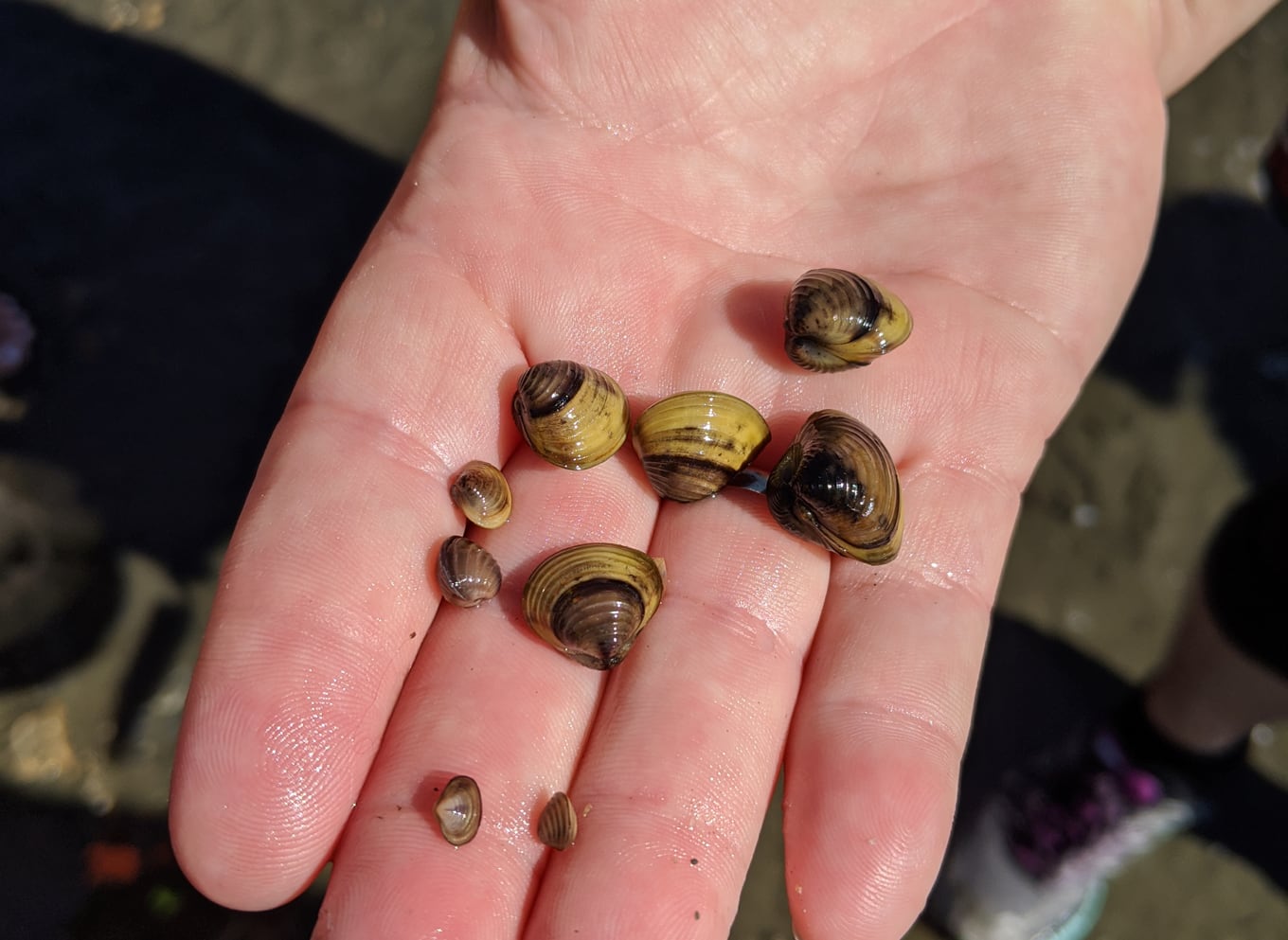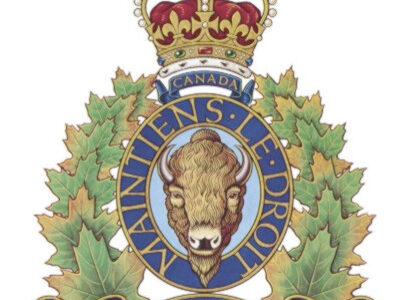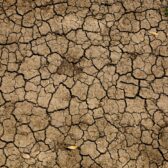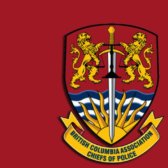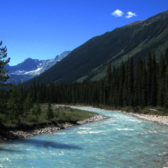Invasive Asian Clams found in Central Kootenay waters
A media release Thursday from the Central Kootenay Invasive Species Society (CKISS) said the Ministry of Environment (MOE) has confirmed that invasive Asian clams (Corbicula fluminea) were found in the Pend D’Oreille River this spring.
The Pend D’Oreille River is a tributary of the Columbia River that passes through southeastern BC.
The CKISS said in the release that this is the first confirmed presence of live invasive freshwater clams in the Central Kootenay region.
However, this is not the first confirmation of these clams in B.C.: they exist in the lower mainland, and in 2020, they were found in Shuswap Lake.
The CKISS said the MOE is assessing distribution and have conducted preliminary surveys near the Salmo River confluence.
“Unfortunately, once established, eradication of these invasive clams from a waterbody is highly unlikely due to limited management options," said Laurie Frankcom, CKISS Education Program Coordinator.
"This is why prevention is the best tool we have," Frankcom adds.
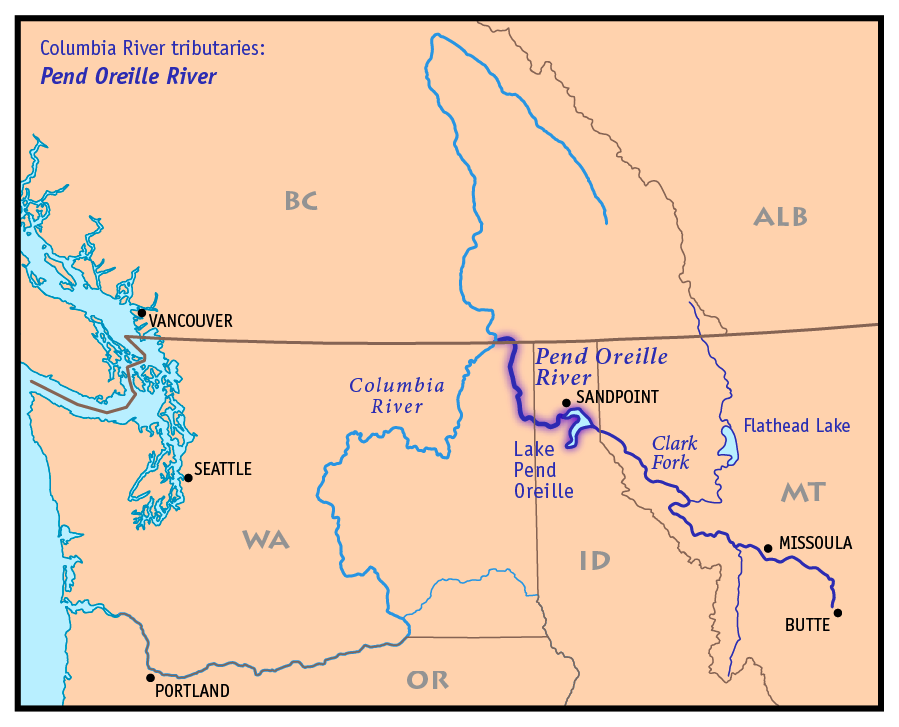
The Pend D’Oreille River,approximately 130 miles (209 km) long, in northern Idaho and northeastern Washington in the United States is a tributary of the Columbia River that passes through southeastern BC.
The non-native clams are a concern to the CKISS, a local non-profit that works to prevent the spread of invasive species in the region.
The CKISS said the clams can clog water treatment systems, contaminate drinking water, and negatively alter aquatic ecosystems by competing with native species for food and habitat.
In response to the recent discovery, CKISS is urging watercraft users and anglers to Clean, Drain, and Dry all gear and watercraft every time they leave a lake or river.
The CKISS said the larvae of this species are microscopic and could hitchhike in the smallest amount of water in your watercraft, surviving to populate another lake with a single clam can create a new population due to self-fertilization, producing up to 70,000eggs per year.
The CKISS said asian clams are found in the pet trade as an aquarium species, which is another potential pathway for this invasive species to spread.
CKISS wants to remind aquarium owners to never dump the contents of their aquarium (animals and plants) into natural places including waterways.
CKISS has a program called ‘Don’t Let It Loose’, which promotes responsible pet and aquarium ownership.
Tips on what to do with an unwanted aquarium pet can be found here:
In addition, the CKISS wants members to be on the lookout for, and report any sightings of, Asian clams.
- The shells are triangular shaped, usually less than 2.5 cm but up to 6.5 cm in length.
- They can be yellow-green to light-brown in colour with elevated growth rings.
- They are found in freshwater at the sediment surface or slightly buried in silt, sand, or gravel substrates.
Reports can be made through the ‘Report Invasive Species” app, provincial website or by calling the B.C. Conservation Officer Services Hotline: 1 877 952-7277.
The CKISS is also monitoring the region’s major waterbodies for invasive zebra and quagga mussels, a different invasive aquatic mollusc, and to-date, they have not been detected anywhere in B.C. waters.
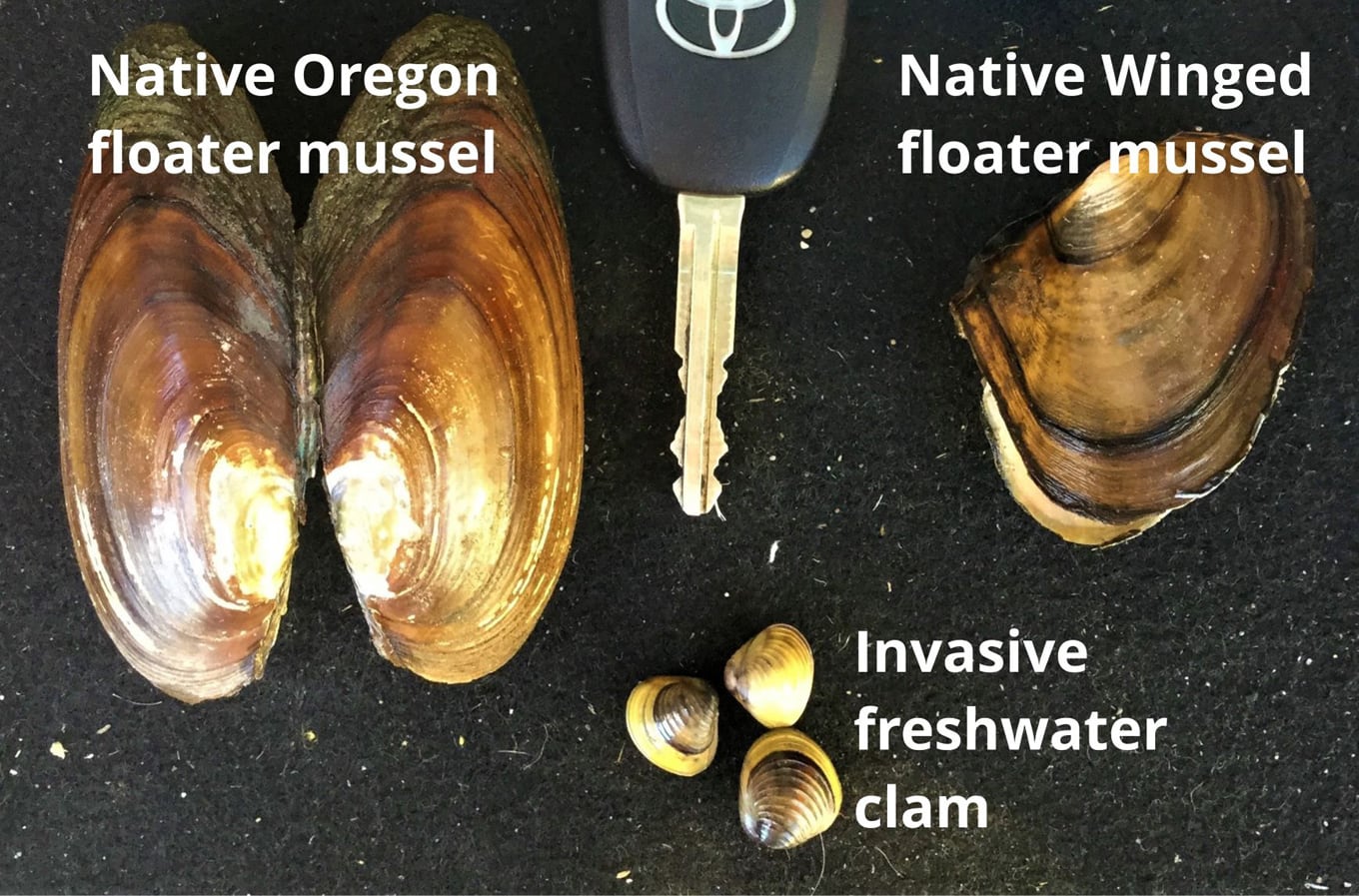
The CKISS is also monitoring the region’s major waterbodies for invasive zebra and quagga mussels, a different invasive aquatic mollusc, and to-date, they have not been detected anywhere in B.C. waters. — Photo submitted



